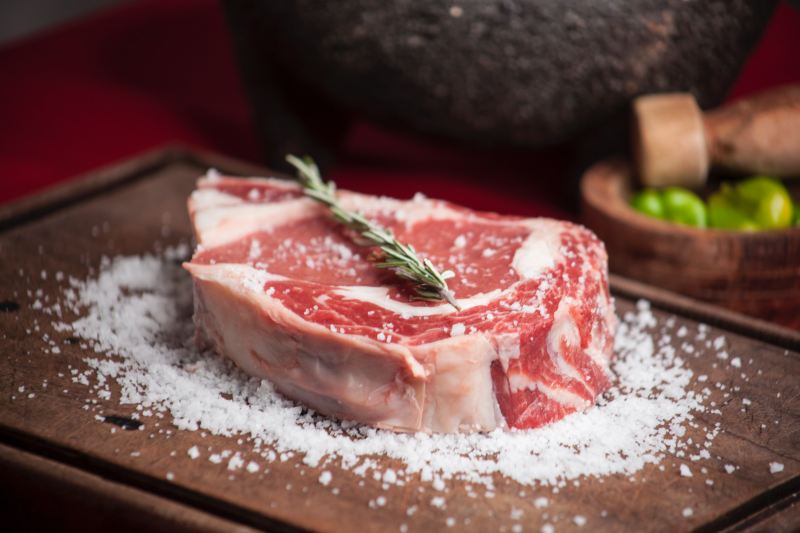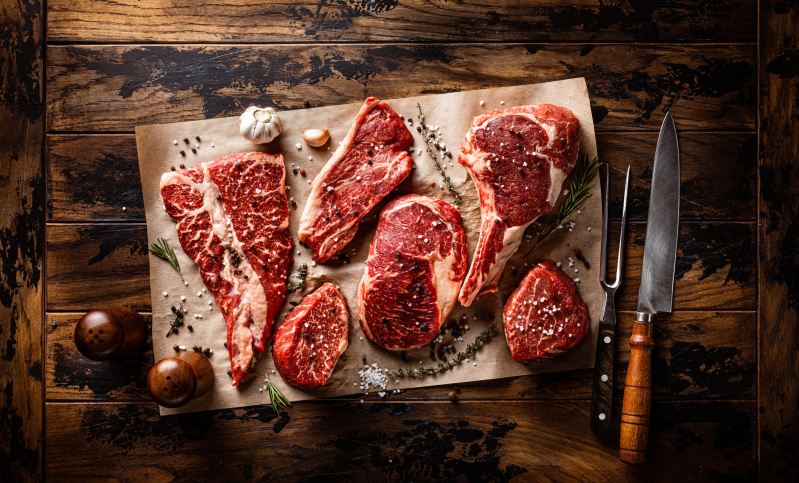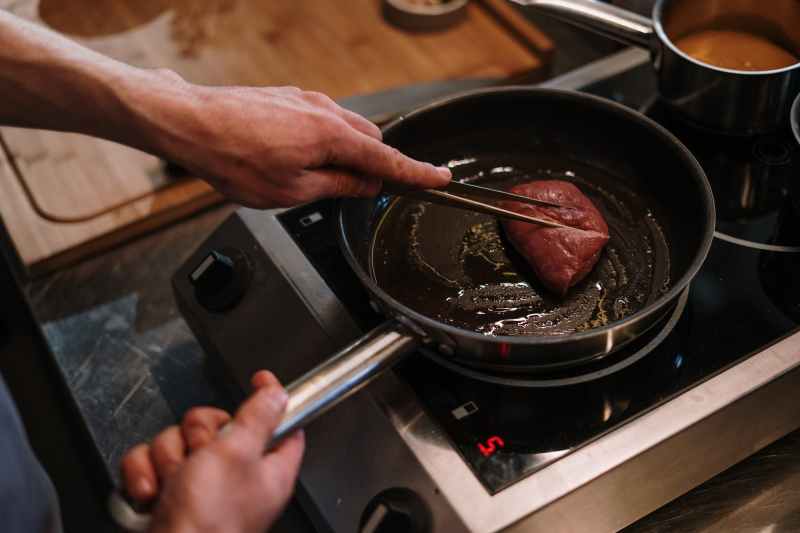
Few meals satisfy the way a truly delicious, perfectly cooked steak does. Add some beautifully roasted seasonal vegetables and a generous heap of buttery mashed potatoes, and you’ve created the perfect meal worthy of any date night, game day, or regular Wednesday dinner.
As simple as cooking the perfect steak is, there are a few common mistakes that we’re all guilty of making when it comes to this hearty meal. These are five of the top steak-cooking violations and what you can do to fix them.
Not knowing your steak cuts
We all know that the butcher counter can be a stressfully confusing place. Pieces of beef that seem to all look the same hugely vary in cost and have weird names like “Oyster Blade.” Don’t worry. You don’t need to befriend Barry the Butcher (though this is probably a good idea anyway) and learn all there is to know about the art of butchery. But there are a few basic guidelines to keep in mind if you’re looking forward to steak night.
Firstly, fat is flavor. Lean beef certainly has its place in the kitchen, but steak night isn’t it (with the exception, maybe, of filet mignon). Look for steaks that have even marbling (veins of fat running through the meat) for the best flavor. For a truly juicy and decadent steak, we love a good ribeye or Porterhouse.
Other cuts like flank and skirt steak are delicious but should be marinaded before cooking, so take that into account when you’re shopping and preparing your meal.
If it’s a braise you’re after, chucks and rounds are beautiful when they have time to cook slowly but aren’t cuts you’ll want to throw on a hot grill.
Know your recipe before you shop, and take a deep breath. There’s no need to stress about knowing everything. If you do feel like befriending Barry, though, he’ll likely be delighted to answer any questions you may have.
Not bringing meat to room temperature
This is probably the most common misstep people make when it comes to cooking steak. After all, it’s an understandable one. You’re hungry, and the kids are whining about dinner, so you open the fridge and see a couple of steaks on the shelf. What’s the harm in just throwing them straight into a pan and having a meal on the table in just a few minutes? Well, the harm will be uneven cooking, which is frustrating and well, gross.
It’s important to let steak come fully to room temperature before it’s cooked to avoid cold spots and uneven doneness. Depending on the cut of beef, this should only take about 30 minutes, and will pay off big time in the flavor department.
Using the wrong fat to cook
Because steak requires a fast, high cooking temperature (more on this in a moment), it needs a fat that can take the heat, too. If your oil or butter burns on the surface of the steak, the char-grilled flavor you’re after will just taste bitter and burnt, which is not tasty.
Different oils can handle different temperatures. You might have heard this described as an oil’s “smoke point”, which is the temperature at which an oil will stop glistening and start to smoke and burn. Olive oil, for example, has a relatively low smoke point, meaning it will burn much more quickly than an oil like canola whose smoke point is quite high. Because steak needs high heat to cook properly, use an oil with a high smoke point.
It should be said, also, that while butter is absolute heaven when incorporated into a steak, it, too, has a relatively low smoke point. It’s best to baste a steak with butter after it has been cooked in another fat. Healthy? No. Worth it? Absolutely.
Cooking at a low temperature
Low and slow is a beautiful cooking method for a plethora of foods. Steak isn’t one of them. The secret to a deliciously seared, caramelized steak is high, fast heat that works quickly to seal in all of the meat’s moisture.
One of the reasons restaurant steaks often taste so much better than the ones we make at home is because they use professional grills and broilers that can get up to 1800 degrees. In a home kitchen, it’s hard to compete with that kind of heat, but you can still do a decent job with a flame as high as it will go and the right pan.
When it comes to the right pan for steak, a cast iron is the way to go. Stainless, enameled, and nonstick pans just won’t cut it when it comes to creating a good char. Cast iron pans heat evenly and can handle the high heat that’s necessary for a good steak. They also transfer easily to an oven if you prefer to sear your steak on the stovetop and then move to the oven to finish cooking.
Not resting meat
Like most foods, steak needs to rest after having been cooked. Granted, this is admittedly the most difficult part of cooking a delicious steak, but it must be done. This step is not merely an exercise in patience, but a crucial part of a flavorful and juicy steak. When steak is cut too soon after being cooked, the juices inside don’t have time to redistribute back into the meat, and will end up in a sad puddle all over your cutting board, leaving your steak sad, dry, and flavorless.
Difficult as it may be to wait, your patience will be well worth the effort if you remove the steak from the heat source and tent it with foil for 10 – 30 minutes, depending on its thickness. On the bright side, this is a perfect time to prepare a quick and simple side dish.
Editors' Recommendations
- How to cook soft-shell crab at home
- How to open a wine bottle without a corkscrew
- How to cook or grill a hot dog perfectly every time
- Women distillers you should know who make spirits all over the world
- What is low-acid coffee (and should you make the switch)?








